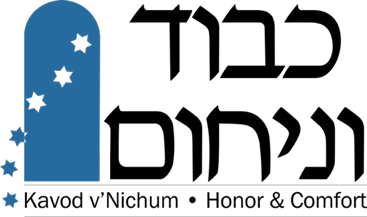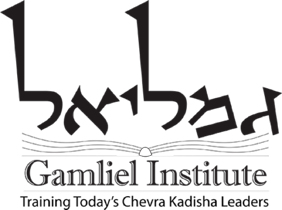Taharah Supplies
This supply list is intended to be a comprehensive but not exhaustive listing of those items found most useful to have on hand for the performance of taharot. Additionally, it includes a summary listing of items many funeral homes provide.
While there are no set requirements that every Chevrah Kadisha group must keep a supply of these items, experience has shown these items to be very useful when readily available. Comments are provided to clarify the usage or reason for each item.
Items That May Need to be Provided by the Chevrah Kadisha:
NOTE: The funeral home should usually provide the items noted with asterisk (*), but it is useful to have extras in the chevrah supply kit.
Administrative and Preparatory
- Supply list (to track usage) [This list is used to maintain the kit contents. If we know how much is supposed to be there, it’s easy to order more when the supplies are used up.]
- Tupperware or similar plastic containers to organize small items. Organizing all of the small items in the kit can be simple if such containers are used. Label the lids with a marker for ease of finding things. (Materials should be laid out on disposable cloth and organized prior to beginning taharah)
- Disposable tablecloths to place items on (To keep kit contents clean, place kit contents on one of these when you begin the taharah and throw it away after the taharah is completed and kit contents have been put away.)
- Bolt of muslin cloth: This can be used for creating larger sovevim (need about 3 yards of 90-inch wide for a sovev) and/or head coverings, etc., as needed [Sometimes the shrouds come with a sovev (the sheet laid into the coffin) that is too small for the size of the body; sometimes the head covering or bag are missing, or a piece is torn or gets soiled. This bolt of cloth is easy to use to create substitutes when needed.]
- Yahrzeit candles and matches [If the funeral home has not lit a candle in the room, light one of these before you begin. It is placed on or near the finished coffin after completion of the Taharah and kept there until burial.]
Worker Protection
[All of the items in this category are to protect Chevrah Kadisha members’ clothes from water, blood or other liquid splashing. Gloves can help protect a chevrah member who has a cut on their hand. Glasses can help protect from getting splashes in the eyes.]- Smocks with full sleeves*
- Surgical gloves* (small, med, large, and xlarge) – non-allergenic
- Non-skid booties*
- Disposable face shields*
Tefilah
[All of the items in this category are used by Chevrah Kadisha members while doing Taharah or related work. Members who do many Taharot each year may not need these, while those who do few usually need them to remind them of the order of the work and the words to the prayers. The Psalms are for shmira (sitting with the deceased before and after the Taharah is performed) not for the Taharah itself.]- Taharah Manual(s)
- Taharah tefila wall poster (optional)
- 8-10 Kippot (for Chevrah members as well as for deceased) – black
- Book of Psalms
Cleaning and Washing
[These items are used during the phase of Chevrah Kadisha work in which the deceased is washed physically from head to toe. It is important that we carefully clean the body and seal any wounds so they will not leak. Some are concerned that the containers used during this phase get contaminated, hence the recommendation to use disposable containers like Tupperware instead of metal or glass bowls, etc. Clean sheets are used to cover the body throughout this work. They should be rectangular, white, simple cotton sheets. They are usually provided by the funeral home since Chevrah Kadisha organizations usually don’t have the means to properly launder them after use.]- Wooden nail-cleaning sticks
- Nail polish remover
- Scissors
- Cotton balls, gauze pads*
- Skin sealer tape or surgical tape (preferably paper rather than plastic)
- Pierce seal powder or liquid bandage or Monsels solution
- Large bandages or surgical pads
- Medical quality antiseptic spray
- Superglue, rubber cement
- Disposable containers to hold water for washing meit/meitah (large “tupperware” containers or equivalent)
- Heavy-duty disposable paper towels*
- 10 bedsheets (single/twin OK, but full length)*
- Large roll of cotton batting*
Taharah
- One 8’ redwood 2×4 cut into four 18” lengths and one 14” length, edges sanded smooth [During the spiritual purification phase of the Chevrah Kadisha work, the Taharah itself, the body needs to receive the full flow of the purifying waters. There are a number of methods used during this phase including lowering the body into a mikvah, standing the body or sitting it upright and pouring over it, and laying the body on boards and then pouring water over it. These boards are used for the latter of these methods. The boards are placed under the neck, shoulders, hips, legs and feet, as a means to separate the body from the table.]
- A double-handled plastic hand washing pitcher [Chevrah Kadisha members wash the hands with this in the same way washing is done for “netilat yadaiim”, but without the blessing.]
- container for water used for washing
- Three 8- to 10-quart rubber or durable plastic buckets with measurement marks on the side and a good pouring handle [It is required to pour an uninterrupted flow of at least 24 quarts of clean water over the body to simulate the purifying effects of a running stream or immersion into a mikvah. These buckets are used for that pouring. Usually one person begins pouring at the head and continues down the right side of the body. When they almost reach the feet, a second person begins pouring at the head with a second bucket pouring down the left side of the body. When they almost reach the feet, the first person again pours down the right side or down the middle of the body.]
- Egg (optional, must be renewed often) [There is a tradition that some teams still use today that comes from the middle ages. It is to paint the body with an egg and vinegar mixture. The traditions vary. However, it is common to paint a bit on the forehead, chest, and inner thighs. This was done to allow others to recognize a dead Jew from gentiles by smell.]
- Vinegar (optional – see egg above)
- Cups (for mixing eggs and vinegar if used)
- Earth from Israel* [All Jews in the Diaspora get symbolically buried in Israel by having Israeli soil sprinkled into the coffin.]
- Broken pottery shards (simple natural clay flower pot, broken into 1” pieces) [Pieces of pottery are placed over the eyes and mouth. There are two common explanations. 1) When using caskets, it is one way of having earth come in direct contact with the body, as is considered most desirable, 2) It is a sign of teshuva – penitence – for any possible sin the mouth or eyes may have been responsible for in life. These shards should not be glazed or colored, just plain Terra Cotta.]
Halbasha
- Burial Garments (tachrichim) for a male and a female (the number needed will vary with the volume) [All Jews are equal in death, so all Jews are dressed alike – in the manner of the High Priest. The shrouds include pants closed at the bottom, a shirt, a jacket, a head covering, and for a woman, an apron and sometimes the head covering is in two pieces. There are also one-piece shrouds that can be used. A strip of cloth is also provided as a belt and there are strips tied around the legs as well. They are usually made of simple white linen, but can also be white cotton.]
- Tallitot [All men and some women today are buried with a tallit wrapped around the outside of the shrouds, around the shoulders. One of the tzitzit (fringes) is removed from the tallit and tucked into the belt. Some families want to use the tallit of the deceased, others don’t. The supply in the kit provides for those who do not wish to use the tallit of the deceased.]
- Disposable diapers for adults [Sometimes the body tends to continue leaking. Diapers are only used when necessary.]
Aron
[The items in this category are necessary to prepare the coffin if the funeral home has not done so. Holes are drilled into the bottom of the coffin to promote immediate decomposition. In some cases the lid is missing dowels or they don’t fit or they break off. It’s easy to glue another dowel in place with woodworking glue. Be sure to purchase the regular glue that dissolves in water.]- 3/8” electric drill and a 1” quick-boring bit
- 10’ standard extension cord able to handle the current specifications of the drill
- Some ¼” standard woodworking gluing dowels
- Titebond or Elmer’s wood glue
Summary of Items Often Provided by the Funeral Home:
This is a summary of the most obvious items usually provided by the funeral home.
- Paper towels
- Sheets for covering the meit/meitah
- Earth/soil from Israel
- Tachrichim
- Aron
- Rubber/vinyl gloves
- Plastic gowns or aprons
- Surgical masks
- Face shields
- Booties
- Head rest
- Garbage cans – for bio waste and normal trash
- Laundry disposal can – for used sheets, towels, etc.

